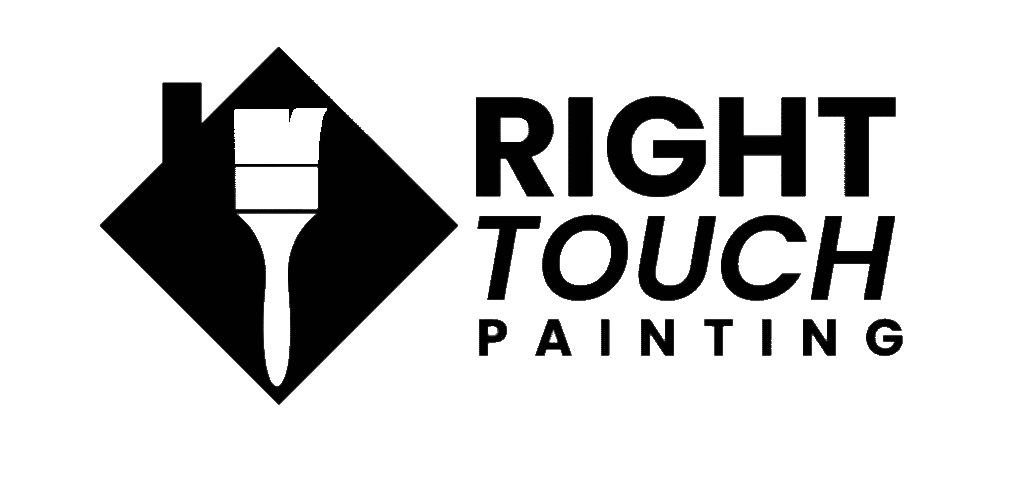
When you invest in a professional painting service, you expect excellent results that transform your space and stand the test of time. But how can you truly evaluate if your painter delivered quality work worth your investment? As experts at Right Touch Painting, we understand the importance of recognizing professional craftsmanship. This comprehensive guide will equip you with the knowledge to assess your painting project like a pro, helping you identify quality work and understand when concerns might be warranted.
The Initial Visual Inspection: What Catches Your Eye
The first assessment of any painting job happens naturally—what do you notice when you first look at the newly painted surfaces? A truly professional paint job should create a sense of visual harmony and completeness. The walls should appear uniform, with no distracting flaws drawing your attention.
Quality painting work has a certain “invisibility” to it. Rather than noticing specific parts of the wall or trim, your attention should be drawn to the overall transformed space. If you find yourself repeatedly looking at certain spots or areas, this might indicate issues that warrant further inspection.
Take a step back and observe the room as a whole. Does the color appear consistent throughout the space? Does the finish (matte, eggshell, satin, or gloss) appear uniform across the surface? The paint should enhance the architectural features of your home rather than draw attention to flaws or inconsistencies.
Color Consistency and Coverage: The Foundation of Quality
One of the most fundamental aspects of professional painting is achieving consistent color coverage. Examine the walls in different lighting conditions—morning, afternoon, and evening. Quality painting maintains color consistency regardless of lighting changes.
Pay special attention to transitions between colors, particularly where walls meet ceilings or where different colors adjoin. These transitions should display clean, straight lines with minimal bleeding between colors. The edges where one color meets another should be crisp and deliberate, showing the painter’s precision and careful masking technique.
For walls with a single color, examine them from different angles and distances. There should be no visible differences in color density or texture that might indicate inadequate mixing or inconsistent application methods. A professional painter understands the importance of thoroughly mixing paint to ensure pigment distribution remains consistent throughout the job.
Surface Preparation: The Hidden Factor in Lasting Results
While not immediately obvious to the untrained eye, proper surface preparation significantly impacts both the appearance and longevity of your paint job. A skilled painter invests considerable time preparing surfaces before applying a single drop of paint.
Run your hand gently along painted walls—they should feel smooth and consistent. Any roughness, bumps, or texture irregularities may indicate inadequate sanding or surface preparation. Small bits of debris or hair trapped in the paint are signs of rushed preparation or cleaning.
Areas that previously had damage—such as nail holes, cracks, or dents—should be virtually undetectable after painting. Professional painters fill these imperfections, sand them smooth, and prime as needed before applying the finish coat. If these repaired areas remain visible or appear as depressions or raised spots, it suggests insufficient preparation.
Paint Application Techniques: The Craftsmanship Behind the Color
Beyond the visible finish, the technical application of paint reveals much about your painter’s skill level and attention to detail. Professional painters develop precise techniques that ensure optimal coverage, adhesion, and longevity.
Examine walls in raking light (light that hits the wall at an angle, such as from a window or side lamp). This lighting reveals application patterns and potential flaws. In proper application, you shouldn’t see obvious roller marks, brush strokes, or variations in paint thickness. While some finishes naturally show more texture than others, the application should appear intentional and consistent.
Check transitions between different application tools—where brush work meets roller work, for instance. These transitions should be seamless, with no noticeable differences in texture or thickness. Skilled painters develop techniques to blend these transitions invisibly.
Trim, Edges, and Detail Work: Where Excellence Truly Shows
The precision work around trim, corners, and architectural details often separates merely adequate painters from truly exceptional ones. These areas require steady hands, proper tools, and patient craftsmanship.
Examine baseboards, crown molding, door and window trim, and other architectural details. Paint coverage should be even with no bare spots or excessive buildup. The edges where trim meets walls should be clean and precise with minimal bleeding.
For windows and doors that open and close, check that paint hasn’t sealed them shut and that hardware functions properly. A professional painter carefully protects or removes hardware and ensures moving parts remain operational.
Cleanup and Attention to Non-Painted Surfaces
The care taken to protect and clean areas not intended for painting speaks volumes about a painter’s professionalism and respect for your property.
Inspect floors, furniture, fixtures, and hardware for any paint drips, overspray, or splatters. Professional painters take extensive precautions to protect non-painted surfaces and meticulously clean any accidental marks.
Check that switch plates, outlet covers, and hardware have been properly reinstalled. These items should be clean, centered, and secure—not painted over or misaligned. Ceiling fixtures and wall-mounted items should likewise be free of paint and properly repositioned.
The Durability Test: Quality That Lasts
True quality reveals itself over time as the paint job endures daily wear and environmental factors. While you can’t immediately assess longevity, certain early indicators can predict future performance.
After the paint has fully cured (typically 2-4 weeks depending on conditions), test its resilience by gently cleaning a small, inconspicuous area with mild soap and water. Quality paint applied correctly should withstand light cleaning without color transfer or surface damage.
Check how the paint behaves in areas of high humidity, such as bathrooms or kitchens. Properly applied paint with appropriate moisture resistance shouldn’t bubble, peel, or show water stains when exposed to steam or splashes.
Technical Standards: The Industry Benchmarks
The painting industry maintains standards that define professional quality work. While you needn’t become an expert, understanding basic industry expectations helps you evaluate your results objectively.
Wall Coverage: The Painting and Decorating Contractors of America (PDCA) standards specify that painted surfaces viewed from a distance of 39 inches (1 meter) under normal lighting conditions should appear uniform in color, sheen, and texture.
Surface Preparation: Industry standards require that surfaces be clean, dry, and free of loose paint, dust, and debris before painting. Previous coatings should be feathered at edges, and surface imperfections should be filled, leveled, and sanded.
Application: Paint should be applied at the manufacturer’s recommended spread rate and dry film thickness. Most premium paints require two coats for optimal coverage and performance.
Common Issues That Indicate Substandard Work
Understanding potential problems helps you identify issues that might warrant discussion with your painter. Some common painting flaws include:
- Flashing: Areas that appear shinier or duller than surrounding surfaces, often caused by inconsistent priming, painting over patches without proper sealing, or applying paint unevenly.
- Hat-banding: Visible differences in sheen or color where brush-applied paint meets roller-applied paint, particularly noticeable around corners and edges.
- Roller Stipple Inconsistency: Variations in the texture pattern created by roller application, suggesting inconsistent pressure or technique.
- Holidays: Missed spots where the previous color or primer shows through the topcoat, indicating insufficient coverage or rushed application.
- Drips, Sags, or Runs: Excess paint that dripped and dried in place, showing as heavy ridges or streaks on vertical surfaces.
- Blistering or Peeling: Paint that bubbles out from the surface or separates from the substrate, often due to moisture issues, inadequate surface preparation, or incompatible paint systems.
- Visible Tape Lines: Ridge lines where masking tape was applied but paint seeped underneath or built up along the edge.
Communicating with Your Painter About Quality Concerns
If you identify issues with your painting project, approach the conversation constructively. Most reputable painters stand behind their work and want to ensure customer satisfaction.
Document specific concerns with photographs, particularly in natural daylight. This helps communicate exactly what you’re noticing and provides clear reference points for discussion.
Refer to industry standards rather than subjective preferences when discussing technical issues. For example, “The PDCA standards specify that walls should appear uniform when viewed from 39 inches away, but I’m noticing these inconsistencies even from across the room.”
Give your painter an opportunity to assess and respond to concerns. Quality-focused professionals will want to inspect issues firsthand and discuss appropriate remedies.
The Right Touch Difference: Our Commitment to Excellence
At Right Touch Painting, we distinguish ourselves through meticulous attention to every aspect of the painting process—from thorough surface preparation to precise application techniques and comprehensive cleanup. Our craftsmen are trained to exceed industry standards and deliver results that transform spaces while withstanding the test of time.
We believe informed customers make the best partners in achieving exceptional results. That’s why we encourage clients to understand the hallmarks of quality painting and communicate openly throughout the project. Our satisfaction guarantee reflects our confidence in delivering work that meets or exceeds your expectations.
Conclusion: Recognizing and Appreciating Quality Craftsmanship
A truly professional paint job transforms your space through both obvious and subtle qualities. The visible aspects—beautiful color, clean lines, and uniform finish—immediately enhance your environment. Equally important are the less visible elements—proper preparation, technical application expertise, and attention to detail—that ensure your results remain beautiful for years to come.
By understanding the indicators of quality painting, you empower yourself to recognize exceptional craftsmanship, communicate effectively about any concerns, and make informed decisions about future home improvement projects. When your painter has truly done a good job, you’ll enjoy not just the immediate aesthetic transformation but also the lasting value of properly protected and beautifully finished surfaces.
Remember that painting is both a practical skill and an art form. The best results come from painters who combine technical expertise with genuine pride in their craft—professionals who understand that every brushstroke contributes to the place you call home.

